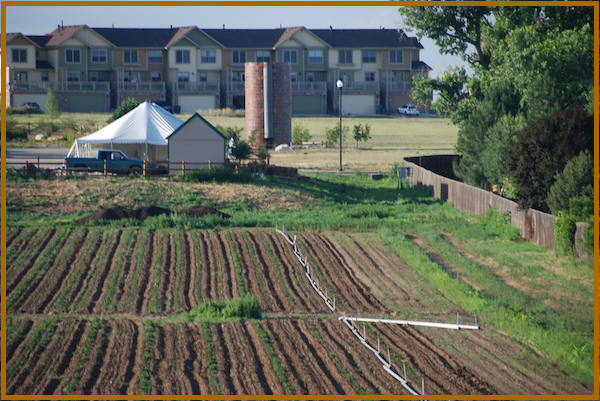Written by Lexi Smith, Summer 2017 intern in the Harvard Law School Food Law and Policy Clinic.
When we talk about the farm bill, often commodities, insurance, and nutrition programs take center stage. These programs are politically contentious and together they comprise over 93 percent of spending in the 2014 Farm Bill, so it makes sense that they are widely covered. However, the lack of attention to other titles can allow misuse to go unnoticed. The Environmental Quality Incentives Program (EQIP), a part of the farm bill’s conservation title, is a perfect example of how well-intentioned programs can be subverted by powerful agriculture companies in the absence of public pressure.
EQIP offers competitive grant funding to conservation-focused on-farm projects. The program offers assistance with a variety of different initiatives, including its Air Quality Initiative, On-Farm Energy Initiative, Organic Initiative, High Tunnel Initiative (dedicated to extending crop seasons through sustainable practices), Strikeforce Initiative (designed to encourage investment in areas with rural poverty), Landscape Initiative (intended to prevent erosion), Conservation Innovation Grants, and Colorado River Basin Salinity Project (which focuses on reducing salt flow into the Colorado River Basin). It also has a large general fund for projects that do not fall under these initiative-based umbrellas.
When EQIP began in the 1996 Farm Bill, it targeted “historically underserved producers,” defined as “limited resource farmers/ranchers, beginning farmers/ranchers, socially disadvantaged producers, Indian Tribes, and veteran farmers/ranchers.” In order to be eligible, producers had to belong to one of these groups or fall beneath a certain income cap. This ensured that the expense of conservation efforts did not push small farms out of the industry. Furthermore, concentrated animal feeding operations (CAFOs) were explicitly ineligible for aid. Farmers also had to be in compliance with a very low set of baseline standards regarding wetland preservation and erosion in order to eligible, creating an incentive to make improvements on their own before applying for funding.
In spite of its origins, today EQIP increasingly supports large-scale, industrial farms rather than their smaller, more disadvantaged counterparts. This happened for a variety of reasons. First, the practice of contracting, particularly among poultry and livestock producers, means that large distributors, packers, and dealers use smaller growers to raise their animals. These smaller farms often fall below EQIP’s eligibility ceiling of $900,000 in annual adjusted gross income and thus qualify for aid. The funding from EQIP therefore functions as a subsidy for the larger corporations, which could afford to pay higher prices from their suppliers and thus support better sustainability measures.
Second, EQIP eligibility requirements have changed significantly. In 2002, the Farm Bill raised the maximum EQIP payment per project from $50,000 to $300,000. CAFOs became eligible to receive aid for the first time, and guidelines focused on projects with the largest pollution impact rather than the most cost-effective plans for conservation. The legislation also set aside 60 percent of EQIP funding specifically for livestock operations. In 2008, the cap for each project was lowered to $300,000, but the Secretary of the USDA was given the authority to waive the $300,000 cap in favor of a $450,000 ceiling in cases of “special environmental significance.” The USDA was also given the authority to waive the adjusted gross income cap on a case-by-case basis for the first time and no limitations were set as to how often they could do so.
Finally, state level allocations of funding are often even more lenient than federal guidelines. In 2008, for instance, Iowa’s NRCS office made “[s]urface and subsurface water quality related to the presence of excessive nutrients and organics related to livestock production by concentrated animal feeding operation’s (CAFO’s) [sic] on open feedlots” an explicit criterion for eligibility. Georgia increased the eligibility of particular counties with high concentrations of CAFOs. North Carolina launched a program under EQIP in 2008 that only allotted money to farmers with concentrated swine operations.
These policies have resulted in massive changes in scope and distribution of funding. EQIP spending increased almost 8-fold between 2001 and 2008 following changes in the 2002 Farm Bill. At present, 20 percent of EQIP funding recipients account for 70 percent of its spending and the top one percent alone accounts for 15 percent of spending. Even though swine CAFOs make up just 10.7 percent of hog farms in the US, they obtain approximately 37 percent of EQIP contracts given to pig farms. Industrial dairies comprise 3.9 percent of US dairy farms, but they get an estimated 54 percent of dairy-related EQIP contracts. Clearly, the program has strayed from its egalitarian beginnings.
The 2018 Farm Bill offers an opportunity to restore EQIP to its original, noble design. Lawmakers could phase out funds for CAFOs under EQIP, lower the per project funding cap back to its original levels, change federal guidelines to refocus on cost-effective and innovative proposals, and/or take away USDA authority to waive the income cap on eligibility. None of these proposals would require any additional funding; in fact, ideas like contractor grant-matching would complement federal spending with private support. Shifting grant evaluation guidelines to reward creativity and efficacy rather than largess and environmental damage would also ensure that taxpayer money is spent on worthwhile projects. Thus, for the good of taxpayers, small and socially disadvantaged farmers, and the environment, Congress should use the next farm bill to bring EQIP back to its effective, equitable, and sustainable roots.

